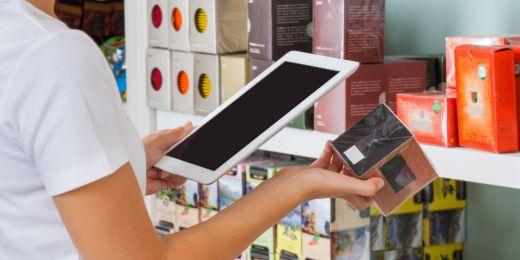What is Retail Digital Transformation?
Retail digital transformation is the process of adopting new technologies and tools to enhance and streamline retail operations. Organizations can choose tools based on their needs and unique business challenges to improve their work and deliver top-notch customer experience. This process allows retail organizations to adapt to the needs of the ever-evolving market.
Importance
Digital transformations happen in various industries, most notably in the retail sector, where technological innovations have reshaped its landscape. This is why modern retail businesses need to monitor these advancements and make sure that they don’t get left behind by their competitors.
There are many reasons to focus on digital transformations in retail. One of the biggest reasons is that most technological advancements improve the customer experience. For the retail sector, satisfying the customer is paramount, which is why it’s important to adopt new technologies that accomplish this goal.
On top of that, digital tools can help automate tasks and gather data about your operations. This allows businesses to optimize supply chain processes, ensuring timely deliveries and reducing operational costs.
Lastly, staying up to date with digital innovations promotes continuous improvement of business operations and practices. This helps shape a growth-driven culture while boosting the effectiveness of operations overall.
Examples
There are many ways retail businesses can make the digital shift. They are free to choose which technological innovations to adopt based on their budget, needs, preferences, and more.
To help you visualize this, here are a few examples of digital transformations in retail.
IoT Smart Shelves
One of the ways retailers are making the digital switch is by using smart shelves that can track inventory automatically. That way, businesses can avoid overstocking or running out of stocks. This improves efficiency while also enhancing the customer experience.
Mobile Point of Sale (mPOS) Systems
mPOS systems enable seamless and quick transactions, eliminating the need for customers to wait in long queues. This not only improves customer satisfaction but also streamlines the checkout process, reducing operational bottlenecks.
Implementing Digital Transformation Strategies in Retail
For best results, companies must take a tailored approach towards going digital with their jobs. Since this process will be different for each retail company, it’s best to have them select the technologies that best apply to their needs however they see fit.
That said, here are a few tips to keep in mind to make your digital transformation more seamless:
Assess Current Technology
Evaluate the existing technological landscape of your retail business to identify gaps, redundancies, and opportunities for improvement. This assessment allows you to make informed decisions about which technologies to adopt or upgrade during the digital transformation, ensuring alignment with your business goals and enhancing overall efficiency.
Invest in Training
Allocate resources to train your workforce on new technologies and digital tools. A well-trained staff is crucial for successful digital transformation, fostering a more adaptable and tech-savvy workforce that can effectively utilize and maximize the benefits of the implemented digital solutions.
Find Customer-Centric Solutions
Prioritize technologies and strategies that enhance the customer experience. By understanding and meeting the evolving needs of your customers, your retail business can build stronger customer relationships and stay competitive in today’s marketplace.
Some strategies you can implement include:
- User-friendly interfaces for customer platforms
- Personalized recommendations
- Seamless omnichannel experiences
Digitize your Supply Chain Operations
Digitizing the supply chain involves implementing technologies like IoT devices and blockchain to enhance visibility and traceability. This ensures streamlined logistics, reduces errors, and enables retailers to respond promptly to changes in demand, ultimately improving overall supply chain efficiency.
Opt for Scalable Infrastructure
Choose technology solutions and infrastructure that can grow and adapt to the evolving demands of your business. A scalable infrastructure allows your retail operations to expand or contract efficiently, accommodating changes in customer volume, market trends, and technological advancements without major disruptions or costly overhauls.




